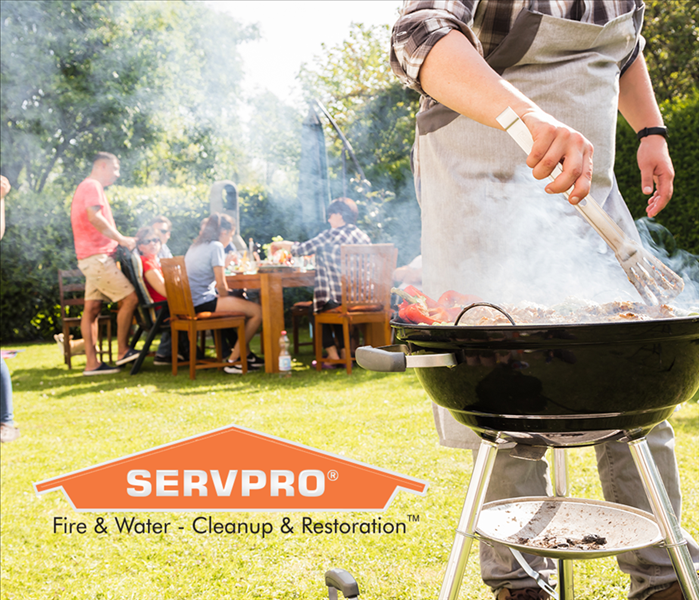Grilling Safety Tips
8/3/2019 (Permalink)
 SERVPRO of Bay County provides 24 hour fire and water damage restoration service in Panama City, Panama City Beach, Lynn Haven, Southport, and more.
SERVPRO of Bay County provides 24 hour fire and water damage restoration service in Panama City, Panama City Beach, Lynn Haven, Southport, and more.
The summer months are the prime cookout season. Many of us are lighting up the grills with our favorite recipes. Unfortunately safety is usually the last thing that come to mind when gearing up for a backyard barbecue. There’s an average of 9,600 grill-related fires in the U.S every year. So, brush up on the tips for safely using charcoal and propane grills to prevent any type of fire safety hazard or fire damage.
Inspect the grill for wear & tear
Has it been awhile since you last used your grill? Be sure to check it for any damage, broken parts, or rust. Same goes for a fuel tank – if it’s beat up with rust, dents or cracks, it’s at risk for explosion and you need to replace it.
Check for leaks
You should inspect the valve and hose that run from the fuel tank for any leaks by making a solution with water and soap, then sprinkle it onto the valve hose. Turn on the gas, but DO NOT ignite the grill, and watch for any bubbles that form. If there’s a leak, repair or replace parts before using your grill again.
Grill away from structures
The heat of the grill can melt siding, cause smoke damage or grease stains, and may even ignite any dry grass, leaves, branches, shrubs and decks. Leave plenty of space on all sides of the grilling area and make sure there’s nothing overhead that can melt or catch fire.
Light the grill properly
How to light a gas grill:
- Step one: open the grill.
- Step two: turn on the gas via the valve on the propane tank.
- Step three: light the grill using the grill’s quick ignition switch or a match (this final step depends on the make and model of your grill). Once your burners are functioning, you’re ready to grill.
How to light a charcoal grill:
- Open the grill vents – there’s usually one on top of the grill and one on the bottom.
- Place newspaper at the bottom of the charcoal chimney, then fill the rest with charcoal and light the newspaper. The newspaper will act as kindling for the charcoal, which will burn hot for several minutes before reaching an ashy-white condition appropriate for cooking.
- Once the coals reach temperature, you can pour them out into the bottom of the grill, below the cooking grates. Check the manufacturer’s instructions for any specific indications and use an oven mitt to protect yourself from burns.
Be ready to put a fire out
Grill fires often contain grease, and these types of cooking fires CANNOT be put out with water. In fact, water makes grease fires worse. Instead, have a dry chemical fire extinguisher nearby. If a spark from your fire ignites something nearby and there’s no cooking grease or oil involved (for example, if a charcoal ember catches some dry leaves) then you can use water to prevent it from spreading. You may want to have your garden hose or a bucket of water at the ready just in case.
Have Fire Damage in Panama City, Lynn Haven, Southport, or surrounding areas? Call Us Today (850) 785-1077






 24/7 Emergency Service
24/7 Emergency Service